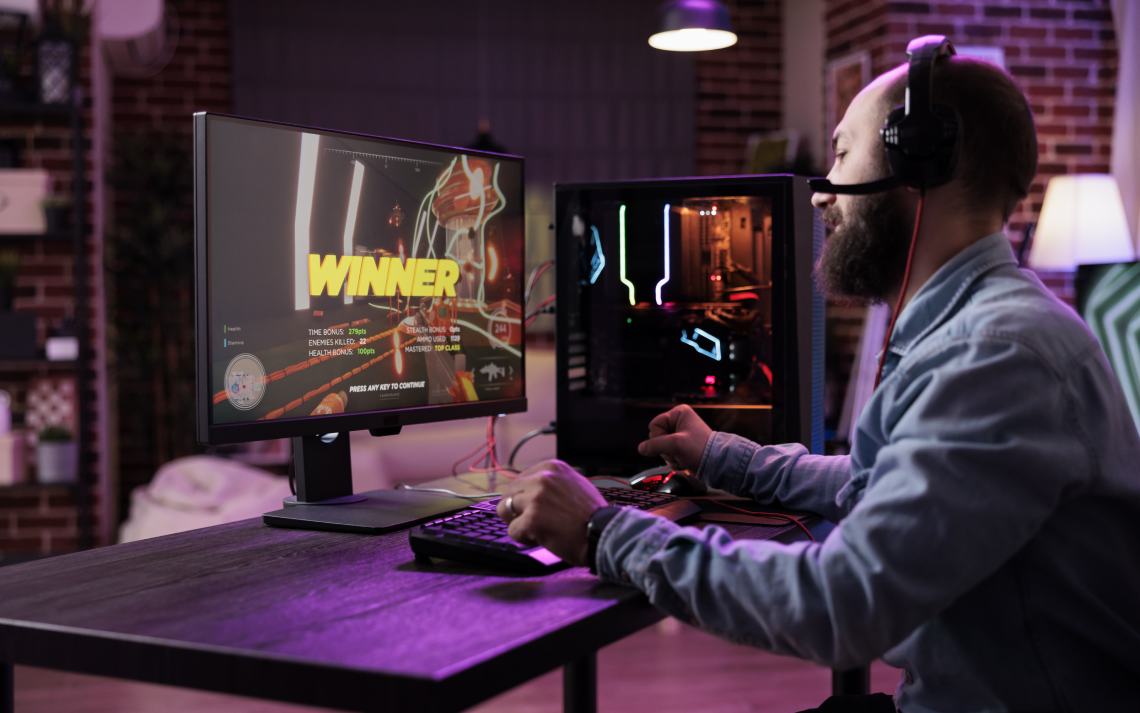In the ever-evolving landscape of entertainment, gaming and technology have formed a dynamic partnership, continually pushing boundaries and redefining possibilities. The fusion of gaming and technological innovations has not only transformed the way we play but has also revolutionized entire industries. Let’s delve into the intricate relationship between gaming and technology, exploring the synergies and innovations that drive this exciting convergence.
The Evolution of Gaming Technology
Gaming has come a long way since its humble beginnings, tracing back to the era of pixelated sprites and 8-bit soundtracks. From the early days of arcade cabinets to the modern era of immersive virtual worlds, the evolution of link slot gaming technology has been nothing short of remarkable.
In the beginning, gaming was predominantly confined to arcades and home consoles, with titles like Pac-Man and Space Invaders captivating audiences worldwide. However, with the advent of personal computers, gaming found a new platform for innovation and creativity. The rise of PC gaming introduced a level of versatility and customization previously unseen in the industry.
As technology continued to advance, the boundaries of gaming expanded even further with the emergence of mobile gaming. Smartphones and tablets brought gaming experiences to the palms of our hands, allowing for gaming on the go and opening up new avenues for developers to explore.
Technological Advancements Driving Gaming Innovation
The pace of technological innovation has been a driving force behind the evolution of gaming. From graphical enhancements to groundbreaking features, technology has continually pushed the boundaries of what is possible in gaming.
One of the most noticeable advancements has been in graphics and visual fidelity. With each new generation of hardware, games have become more immersive and lifelike, blurring the lines between reality and virtual worlds. The introduction of technologies like ray tracing has brought unprecedented levels of realism to gaming environments.
In addition to visual enhancements, technologies like virtual reality (VR) and augmented reality (AR) have revolutionized the way we experience games. VR headsets transport players to fully immersive worlds, while AR overlays digital elements onto the real world, creating unique gaming experiences.
Artificial intelligence (AI) has also played a significant role in gaming innovation, powering everything from intelligent NPCs to procedural generation algorithms. AI-driven game design allows for dynamic and responsive gameplay experiences, adapting to player actions in real-time.
Synergies between Gaming and Technology
The integration of gaming and technology has resulted in synergies that have transformed the gaming landscape. By leveraging technological advancements, game developers have been able to create richer, more immersive experiences for players.
Enhanced hardware capabilities have enabled developers to push the boundaries of what is possible in gaming, allowing for more complex simulations and larger, more detailed worlds. The integration of social and multiplayer features has also transformed gaming into a shared experience, connecting players from around the world.
Cross-platform compatibility has further expanded the reach of gaming, allowing players to seamlessly transition between different devices and platforms. Whether playing on a console, PC, or mobile device, gamers can now experience their favorite titles wherever they go.
Innovations Shaping the Future of Gaming
Looking ahead, the future of gaming is filled with exciting possibilities fueled by technological innovation. Technologies like 5G and cloud gaming promise to revolutionize the way we play, offering low-latency experiences and access to vast libraries of games from anywhere in the world.
Blockchain and non-fungible tokens (NFTs) are also poised to make an impact on the gaming industry, offering new ways for players to own and monetize in-game assets. AI-generated content and procedural generation techniques will continue to push the boundaries of creativity, creating endless possibilities for unique gaming experiences.
Sustainability and eco-friendly initiatives are also becoming increasingly important in gaming, with developers exploring ways to reduce the environmental impact of gaming hardware and software.
Challenges and Opportunities
Despite the many innovations in gaming technology, there are still challenges that need to be addressed. Privacy and data security concerns are paramount in an era where online connectivity is integral to gaming experiences. Developers must prioritize the protection of user data and ensure that players feel safe and secure while gaming.
Accessibility and inclusivity are also important considerations in gaming, with developers striving to make their games more accessible to players of all abilities. From customizable controls to built-in accessibility features, there is a growing recognition of the importance of making gaming experiences more inclusive.
Monetization models and microtransactions continue to be a point of contention in the gaming community, with concerns about pay-to-win mechanics and loot boxes. Balancing innovative revenue streams with player satisfaction remains a challenge for developers seeking to monetize their games effectively.
Conclusion
In conclusion, the relationship between lotus303 gaming and technology is one of mutual innovation and evolution. As technology continues to advance, so too will the possibilities for gaming experiences. From enhanced graphics and immersive worlds to innovative gameplay mechanics, the future of gaming is brighter than ever.
